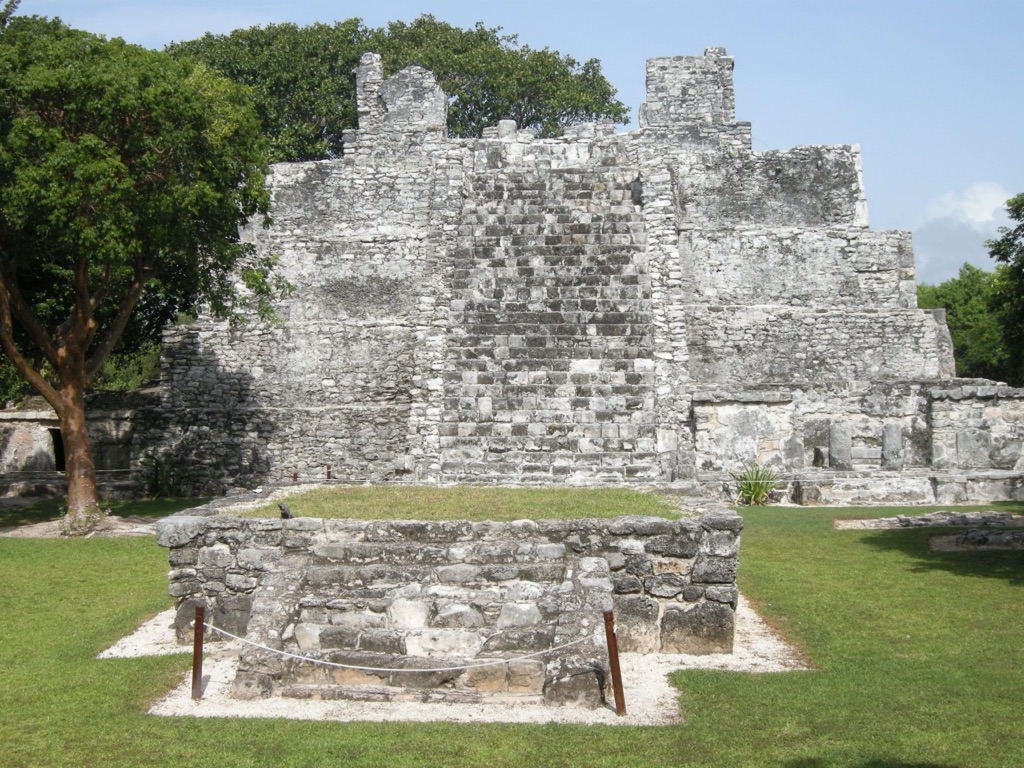El Meco Archaeological Site: A Comprehensive Overview
El Meco is a notable archaeological site located on the northern outskirts of Cancun, Quintana Roo, Mexico. This site, positioned along the coastal road to Punta Sam, offers a glimpse into the ancient Maya civilization that once thrived on the northeast Yucatan Peninsula. Managed by the local INAH (National Institute of Anthropology and History) representative, the site is distinguished by its well-preserved ruins, abundant shade trees, and the presence of various bird species and flowering plants, enhancing the visitor experience.
Get your dose of History via Email
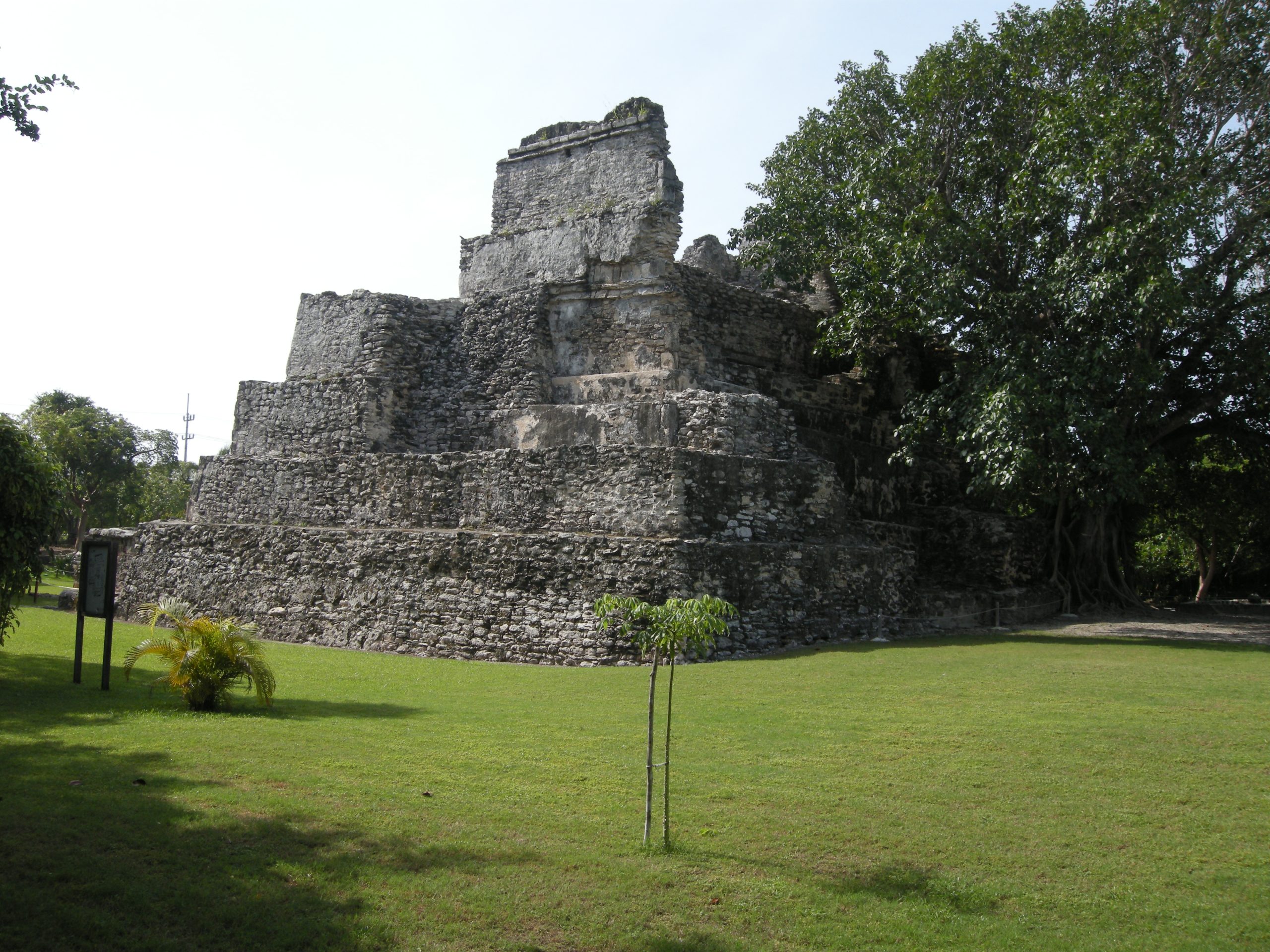
Location and Accessibility
El Meco is situated approximately 4 miles (6 kilometers) from the center of Cancun, making it easily accessible by car, taxi, or minivan. The site is divided by a public roadway, with the coastal portion currently closed to visitors but expected to reopen in late 2024. This section is believed to have been a residential area, with reports of a pier, though no conclusive evidence has been found along the beachfront.
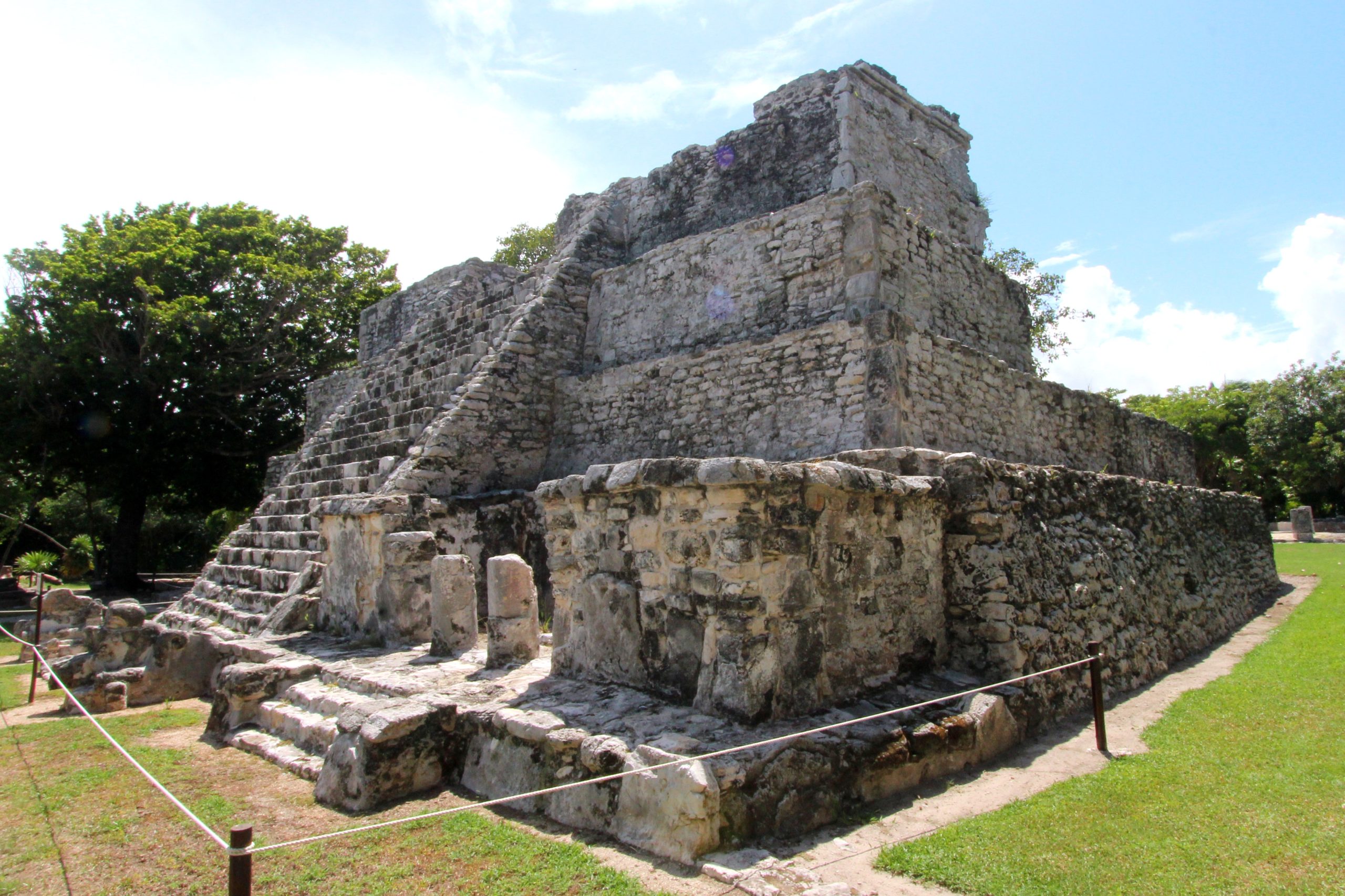
Historical Significance
The origins of El Meco can be traced back to the Early Classic period (200-600 AD), starting as a small fishing village. During this era, the site was under the influence of the major site of Coba, which dominated the east coast of the Yucatan Peninsula. A decline in population and possible abandonment occurred during the Classic Period (600-900 AD). However, El Meco saw a resurgence in prosperity under the influence of Chichen Itza during the Terminal Classic (900-1150 AD) and reached its zenith in the Post Classic period (1150-1500 AD), serving as a crucial embarkation point for devotees traveling to the sacred island shrines on Isla Mujeres. Despite its importance, no stelae or glyphic inscriptions have been found to shed light on its rulers or political relationships with other sites.
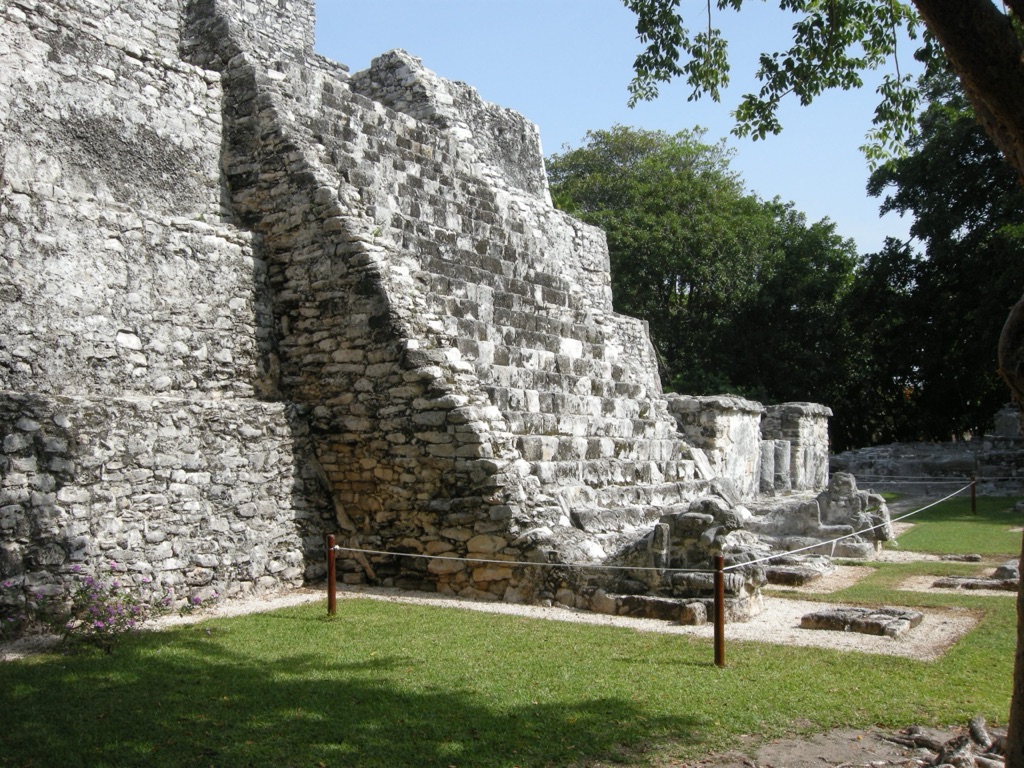
Archaeological Exploration
The site was first documented by Augustus Le Plongeon in 1887, followed by Teobert Maler in 1891. Further descriptions and drawings were produced by Samuel K. Lothrop and Thomas Gann of the Carnegie Institution in 1918. Official excavations were conducted in the 1970s by Fernando Robles C. and Anthony Andrews under the auspices of INAH. Recent restoration efforts have made the site accessible to the public since the early 2000s.
Architectural Features
El Meco consists of three main plaza groups, with additional structures located on private property surrounding the archaeological park. The architecture reflects the “East Coast style,” similar to that of Tulum.
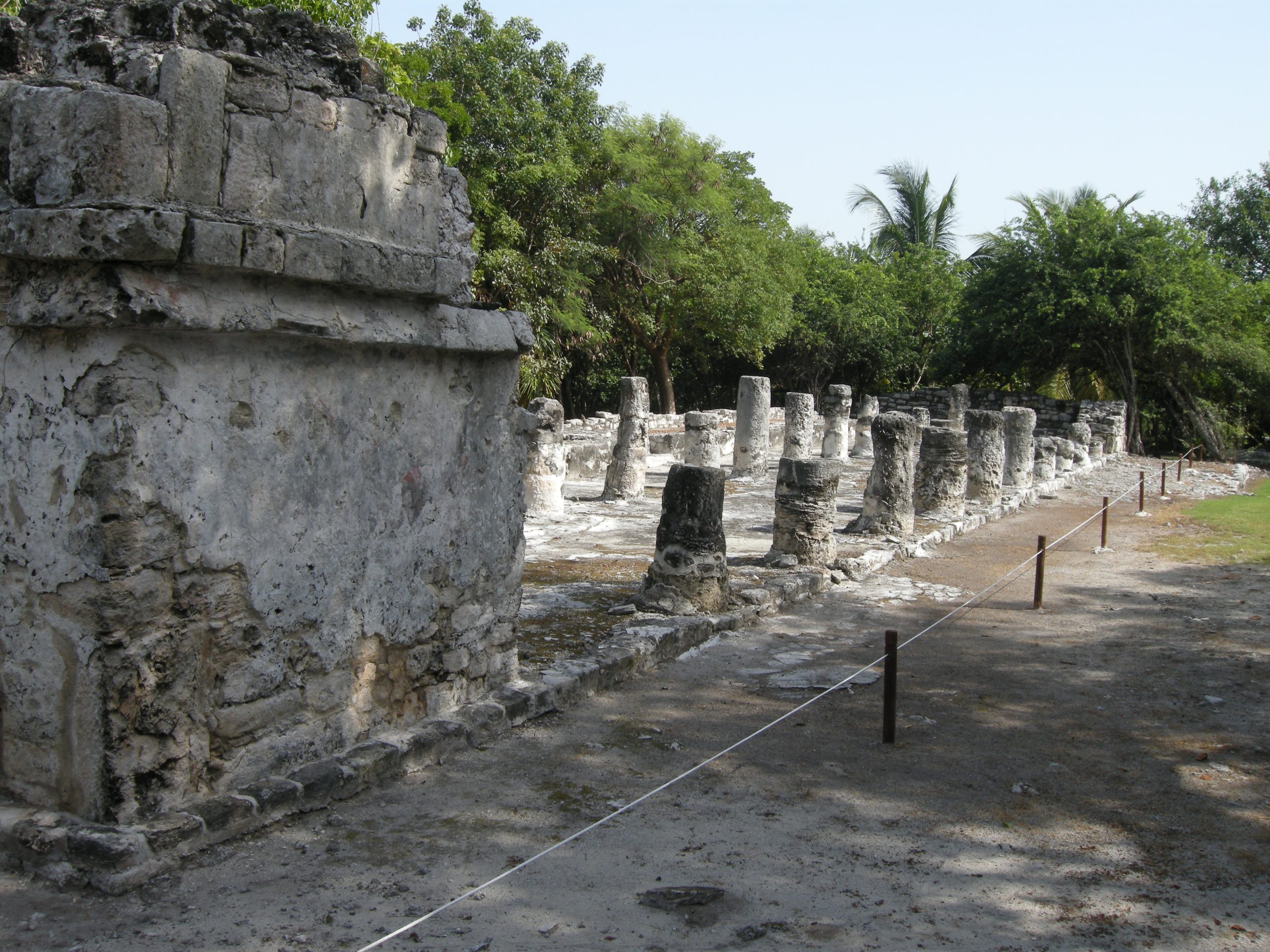
Plaza A
The main feature of Plaza A is El Castillo, the tallest pyramid on the northeast Yucatan Peninsula, standing at approximately 40 feet (12.5 meters). This pyramid exhibits three construction phases and offers a panoramic view of Isla Mujeres. Other notable structures in Plaza A include small temples and platforms thought to have served civic or ceremonial purposes.
Plaza B
Plaza B is characterized by four structures, with Structure 8 being a range-type building that may have functioned as a market or administrative center. An altar/platform and other structures suggest a complex of civic and ceremonial significance.
Plaza C
This plaza includes Structure 12, a long platform with numerous columns, indicative of an elite residential structure. The presence of decorative elements and original stucco highlights the architectural sophistication of the Maya.
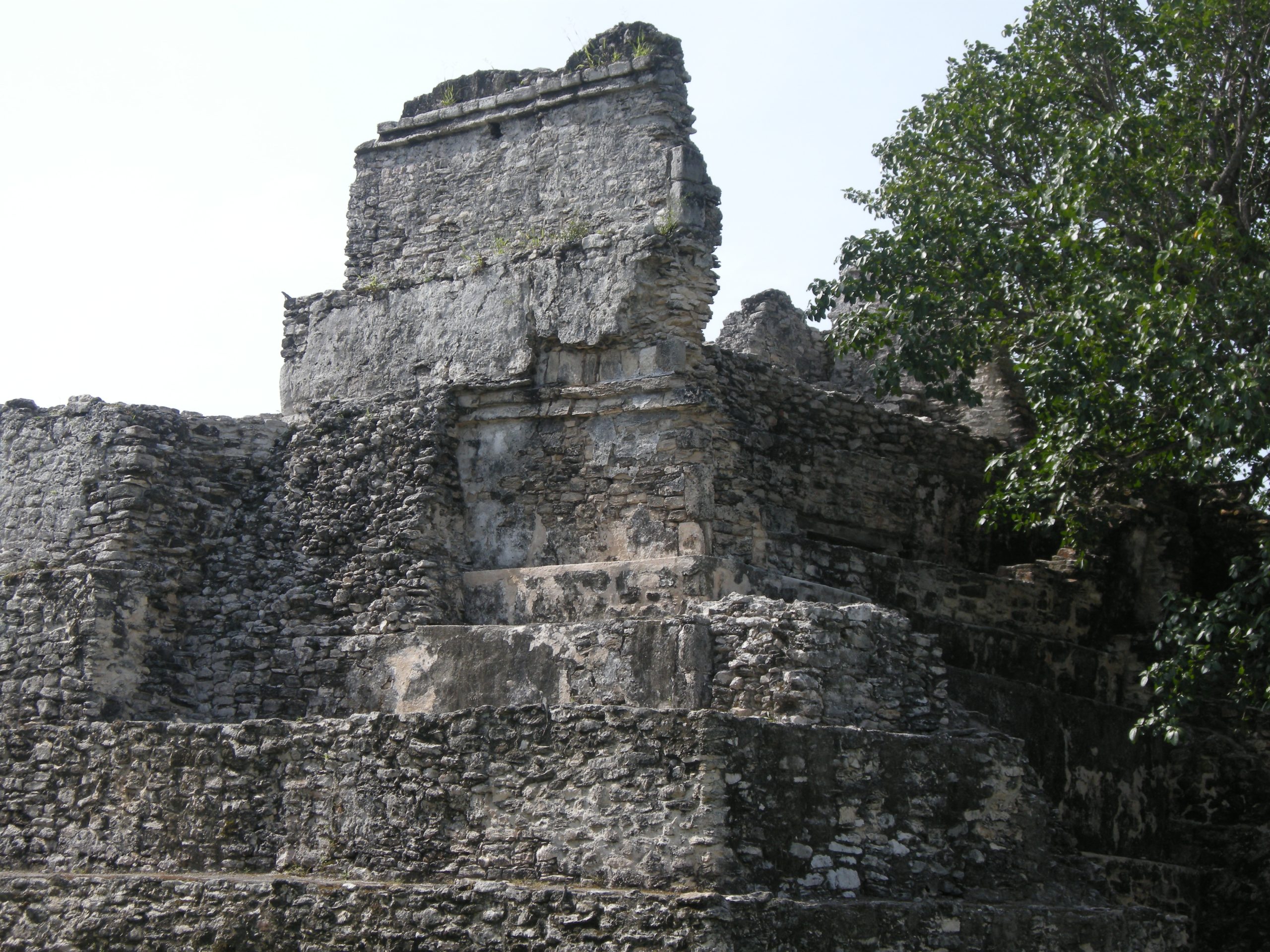
Conclusion
El Meco serves as a testament to the architectural ingenuity and cultural significance of the ancient Maya civilization. Its strategic location, historical importance as a port and religious embarkation point, and the architectural remnants make it a valuable site for understanding the complexities of Maya society. Despite the absence of glyphic inscriptions, the structures and artifacts uncovered through archaeological efforts offer insights into the daily lives, religious practices, and social organization of its inhabitants.
Sources:
Maya Ruins Website

